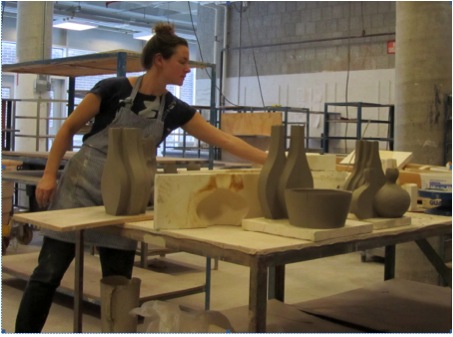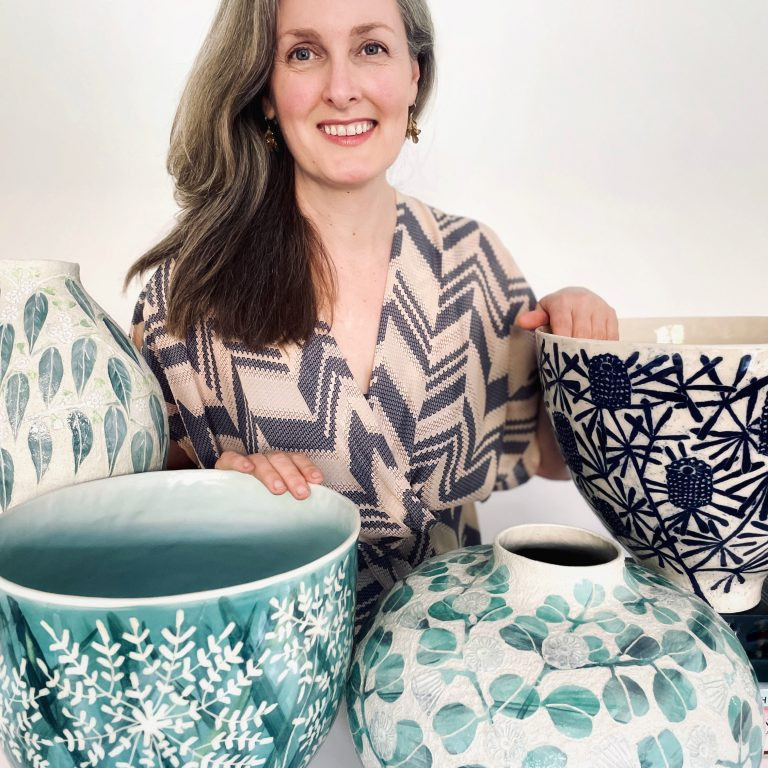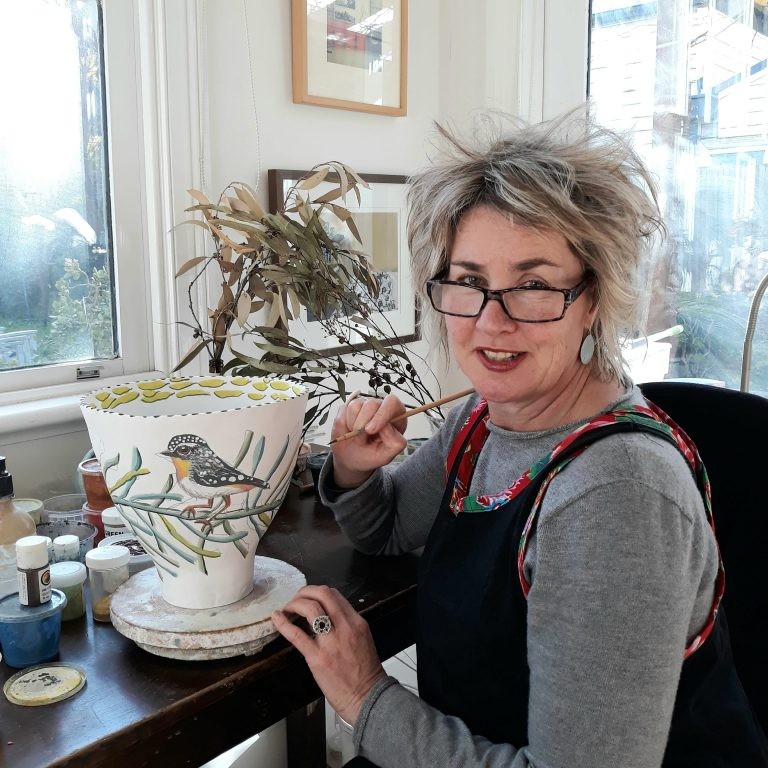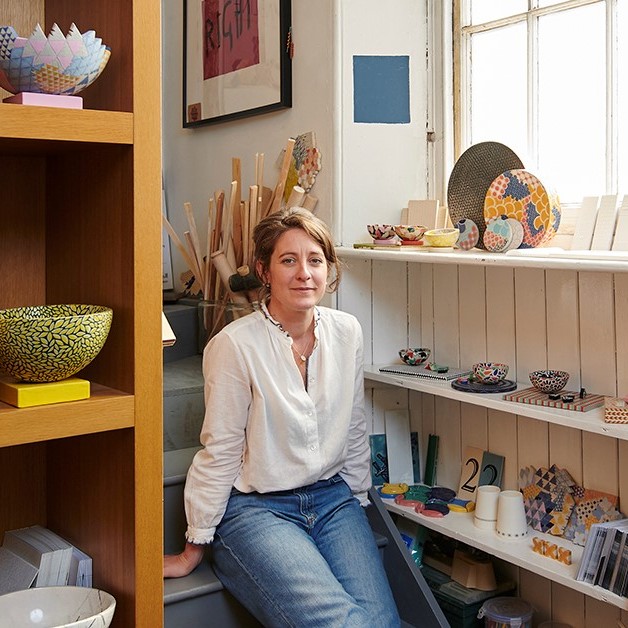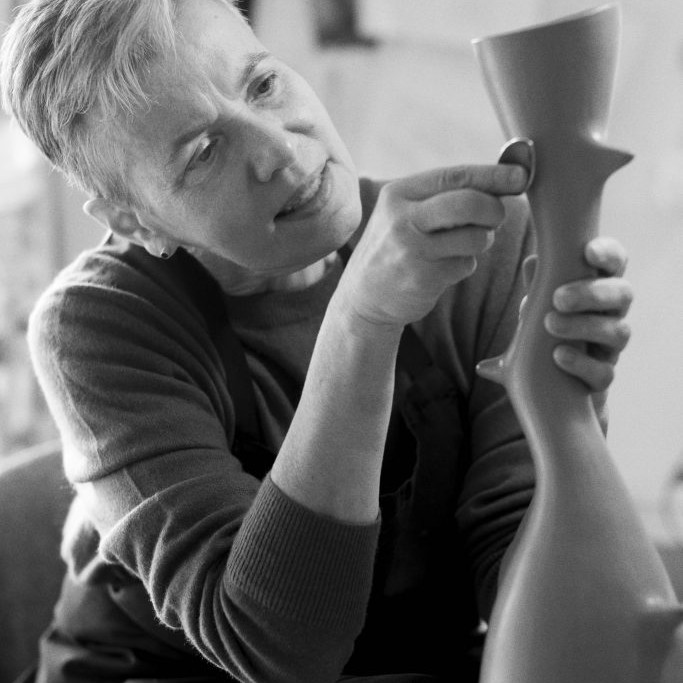Kala Stein Ceramic Artist - Canadice, NY, USA
Kala, when did your first come upon the idea of using double and multiple units?
It came directly out of the process of slip casting and mould making. When one makes a mould of a round object, like a pot, it must be divided into two parts. My ideas evolved from this essential division of the form.
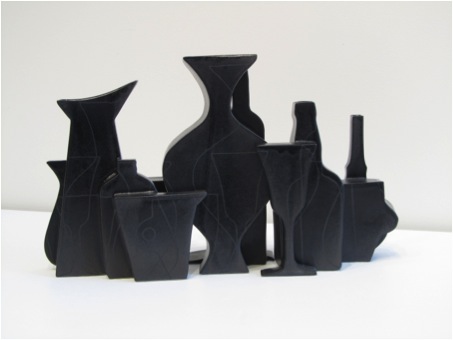
Can you explain the technique you use for your ceramic work?
I make multi-part moulds from clay models- the models may be made on the wheel or on the table as a slab. In many cases I make more than one mould part off of a single model so that I can repeat the shape within one form.
All of the mould parts are then clamped or strapped together each time the form is cast. This way I can make “one-offs” by rearranging the parts of the mould differently each time.
How has the title “Emerging Artist” helped your career?
It was an honour to have earned the title Emerging Artist with Ceramics Monthly magazine. Many artists, teachers, and students read the magazine so it helped me to be widely seen within the ceramics world.
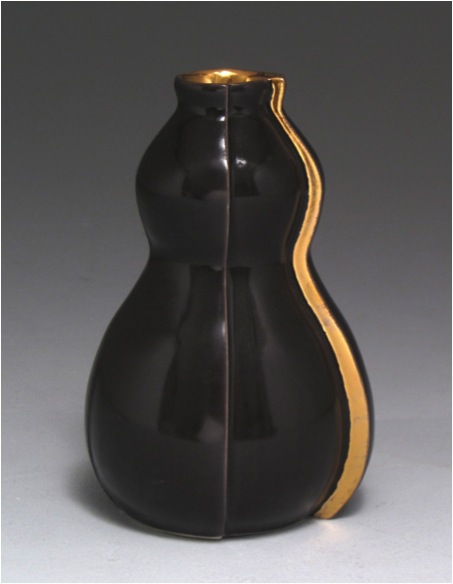
Can you expand on your interpretation of ‘archetypal form’?
The archetypal form is the prime example of a form. A classic or easily recognizable form, often from history.
Is your work usually sold in units? Is this flexible?
No, the unit is not flexible because it is one object, of course, I prefer for people to purchase more than one! The units are designed to be able to fit or group together infinitely.
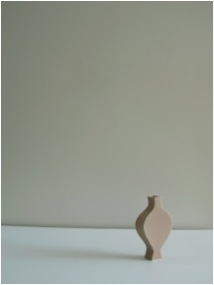
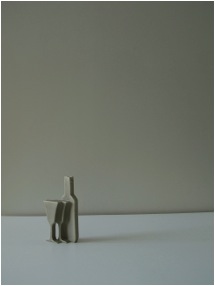
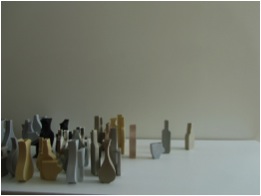
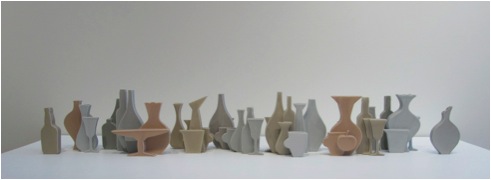
Can you discuss your ‘White Goblet Vase’?
The White Goblet Vase is taken from the large installation, Convivium, and presented as a pair of goblets functioning as a vase. The symbolism of the goblet is celebratory and convivial.
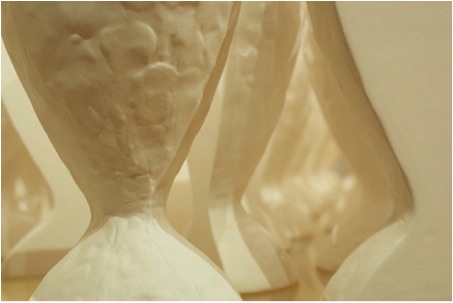
You produce your work in limited editions. Can you expand on this aspect?
Because my work is primarily slip cast, I prefer to limit the number that are made. This helps to define a body of work adding a beginning and an end. It also gives others a better understanding of the value of the work when it is made in small batch editions.
Can you discuss ‘Form and Plenty?’
The inspiration for Form and Plenty comes from the paintings of Georgio Morandi. I am attracted to the feelings of nostalgia and stillness that he captures in his still lives. The pieces in Form and Plenty are functional as vases.
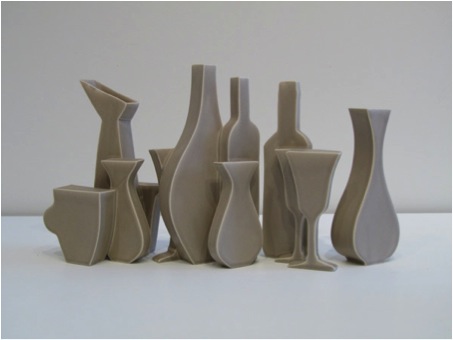
Each unit has an opening and the whole piece holds water. In these vases, unlike my other vases, flowers are unnecessary. I was aiming to capture a dusty, nostalgic feel with the limited and muted palette. The palette helps to merge the forms together into a stronger composition. The combinations of form come out of formal play of one silhouette against another. I always try to compose them in a way that is dynamic yet familiar. In this series I designed some of the forms to look more traditional and some to look more contemporary.
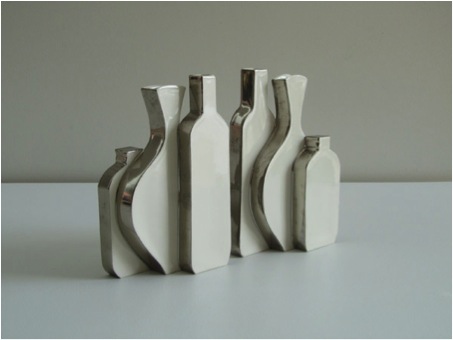
‘Promenade’ allows the florist in us all to succeed. Have you been inspired by Ikebana or was it more simply a bunch of flowers just needing the right artistic setting?
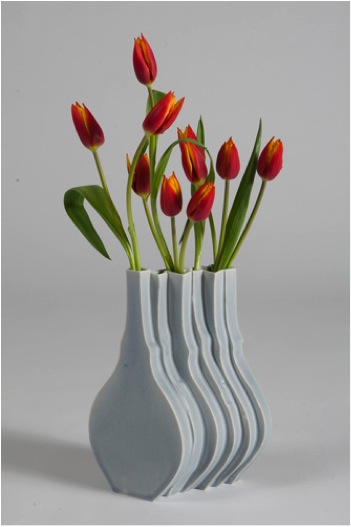
I believe the flowers help to complete the piece, activating it with components of the natural world.
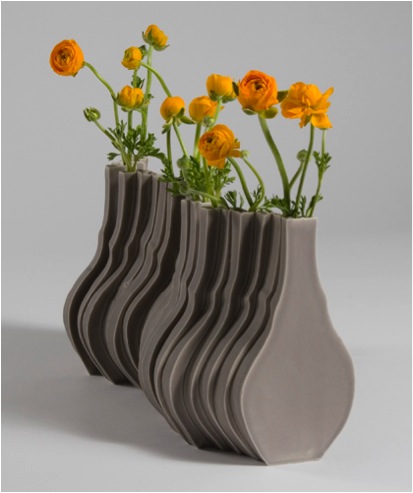
We don’t often think of small ceramics in the context of an installation. Your installation ‘Convivium’ is a photographers delight, please discuss?
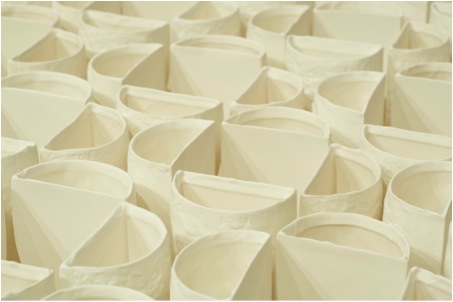
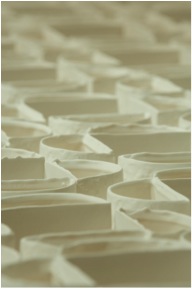
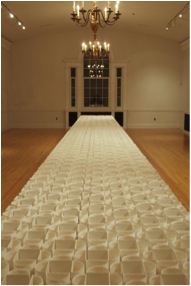
The idea is a monoculture of one form- like a field of crops, rows of corn, etc. The pattern becomes a sea, almost infinite. As one walks around the piece, the pattern changes as the viewer’s vantage point is different.
What a brilliant idea, Cuisine Culture, pottery and food in action; can you tell us more about this?
I can see this as a great TV series! Comment by Deborah Blakeley
This concept was born out of the need to educate our public and expand our following. By pairing food and pottery through a dining experience, one can see how the meal is enhanced with handmade dishes.
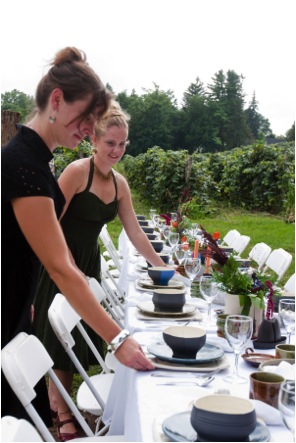
This leads me to ask, what requirements are needed for ceramics and food safety?
The glaze has to be chemically stable and have no toxic chemicals in it. The clay must also be vitrified and dense.
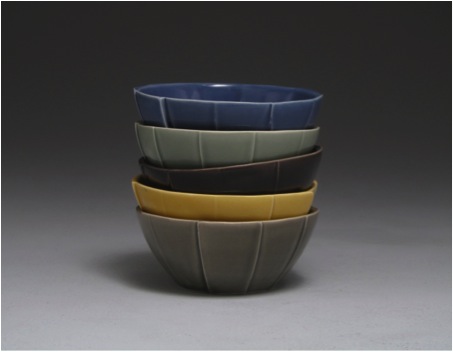
Can you tell us more about your ‘Finger Lakes Tiles’ and how they relate to the area between Candice Lake and Honeoye Lake?
The Finger Lakes Tile shows the region’s unique lakes. I live between Canadice and Honeoye Lakes, up on the ridge. Water is a vital part of life in this region and attracts many tourists, artists and farmers.
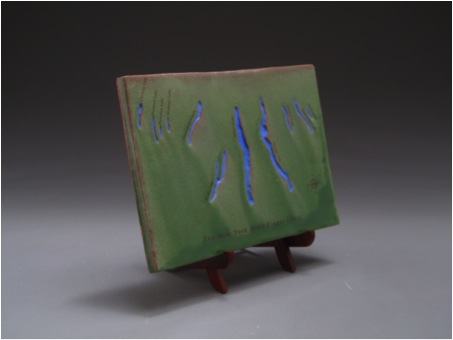
If these tiles entice the reader perhaps they need to totally immerse themselves in Evergreen Trail. Can you give a small picture of how they can also experience a piece of your wilderness?
One can come and rent a cabin in a retreat like setting! We own an old camp that was built in 1959. 3 cabins have been renovated for guests and sit under a stand of towering Norway Spruce Trees.
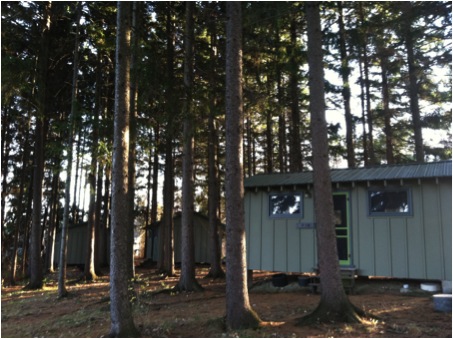
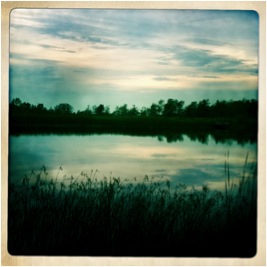
In fact, if there are any artists in your country that would be interested in a house-swap-vacation….contact me!
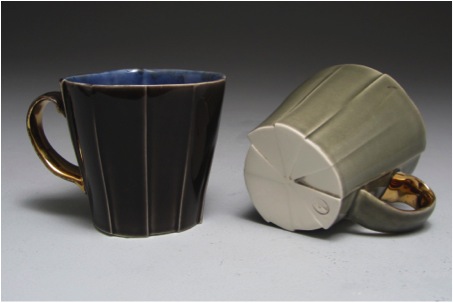
Contact Details
Email:kalastein@mac.com
Web: www.kalastein.com
Phone: 585-590-1019
Kala Stein, Canadice, NY, USA
Interview by Deborah Blakeley, February 2014
Think a colleague or friend could benefit from this interview?
Knowledge is one of the biggest assets in any business. So why not forward this on to your friends and colleagues so they too can start taking advantage of the insightful information the artist has given?
Other artists you may be interested in:


